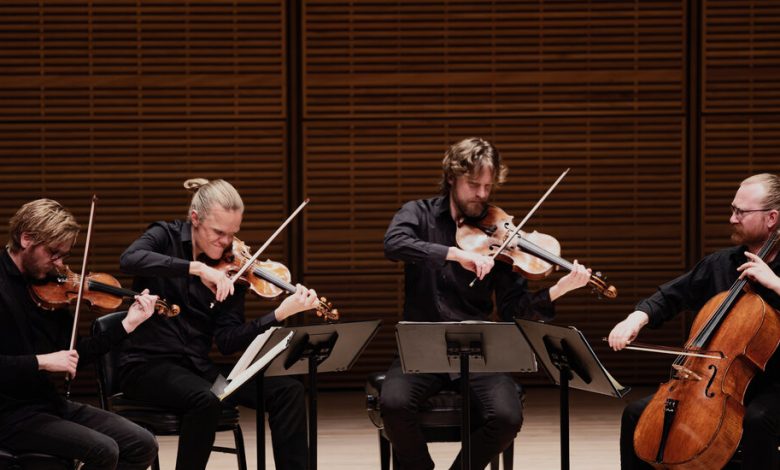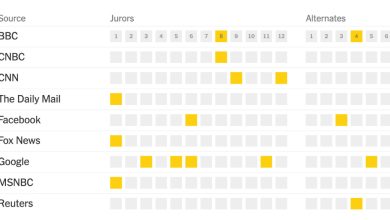Review: The Danish String Quartet Spins Through Schubert

Schubert’s song “Gretchen am Spinnrade” famously imitates a spinning wheel in the piano: the left hand repeating the rhythm of a pedal, and the right whirling a phrase in perpetual motion. It’s not exact, but it is evocative, like the Goethe poetry it’s based on.
At Zankel Hall on Thursday, that spirit of repetition — oblique and constantly transforming — coursed through the third installment of the Danish String Quartet’s “Doppelgänger” project, which pairs Schubert’s late quartets with new commissions, and closes with an arrangement of a lied: in this case, “Gretchen.”
Before that came Schubert’s “Rosamunde” Quartet, a relatively light work among its “Doppelgänger” siblings, and the single-movement “Quartettsatz,” as well as the world premiere of Anna Thorvaldsdottir’s “Rituals,” a slippery but entrancing series of permutations in which a set of musical gestures are rearranged like matter.
That piece rarely repeats itself, but the Schubert ones do; the violist Asbjorn Norgaard, speaking from the stage, described the “Rosamunde” as one of the most repetitive works in the quartet repertoire. (Philip Glass would like a word.) But it was less so on Thursday as the Danes — Norgaard, as well as the violinists Frederik Oland and Rune Tonsgaard Sorensen, and the cellist Fredrik Schoyen Sjolin — skipped the written reprises of the first two movements’ opening sections.
Those cuts make for a slightly shorter performance, perhaps not even easily noticed by a casual listener, but not a materially different experience. More striking was the playing itself, in both the “Rosamunde” and the “Quartettsatz”: unshowy, soft with an ember glow, charismatically dancing. Phrases were passed around with ease; rhythms and voices doubled seamlessly. At any given moment there was, as David Allen recently observed in The New York Times, the impression that each note had been considered. This was ensemble music at its purest — a consensus interpretation, rendered selflessly in service of the group as instrument.
Thorvaldsdottir’s “Rituals” wasn’t written as a direct response to Schubert, but in the context of Thursday’s program it came off as something of a distant cousin; her work is less interested in repeating whole passages, but like her Viennese predecessor she obsesses here over gestures, reshaping them, foregrounding and obscuring them, layering them in explorations of counterpoint and compatibility.
Read into the title what you will: daily routines, ceremonies, religion. They all are implied in the piece’s nine sections — effectively made 11 by two “Ascension” interludes with the rich harmony of a chorale and the serene lyricism of a hymn. The segments flow into one another without pause, except for some written rests, and unfold organically, each little motif introduced then recurring in a new guise.
At the start are sputtering bows and glissando slides over a droning foundation that is occasionally built out into briefly sustained, then shifting chords. Those textures — others come along, including percussive col legno and open fifths that flip steady ground into weightless suspension — glide among the instruments, a vocabulary ordered then reordered, always expressing a fresh thought. Thorvaldsdottir, in a mode characteristically abstract yet suggestive, could prolong an idea like this ad infinitum. But at 21 minutes, her score speaks with poetic concision, ending before it has overstated its point.
About poetry: The Danes concluded their recital with a Shubertian arrangement of “Gretchen am Spinnrade,” in which the first violin acted as the soprano. But they also introduced a fifth instrument, a music box. As Oland turned its handle, the machine spun out a roll of paper punched with the swirling piano line — seeming to repeat itself but, in its small changes, irresistibly moving.
Danish String Quartet
Performed on Thursday at Zankel Hall, Manhattan.




